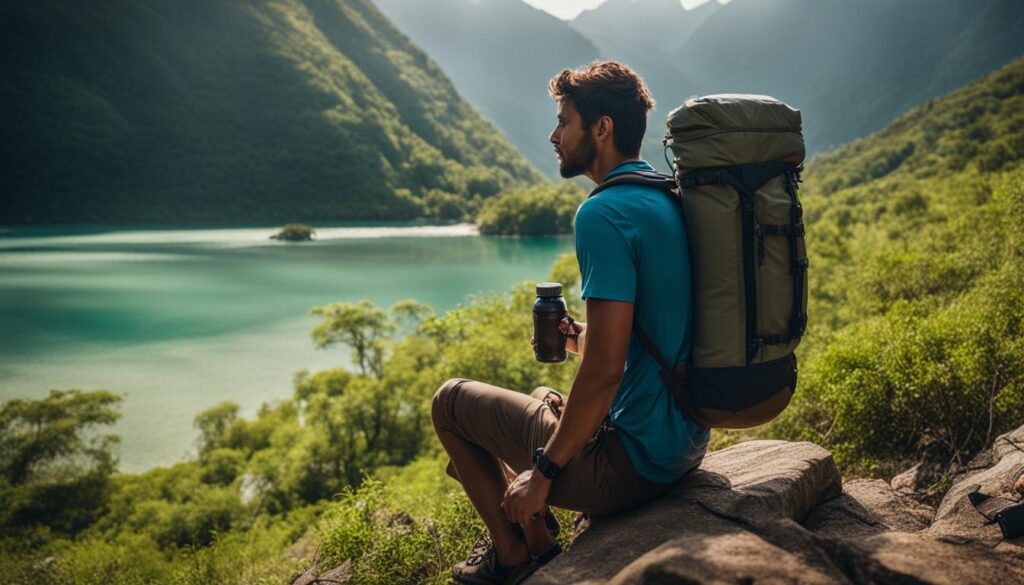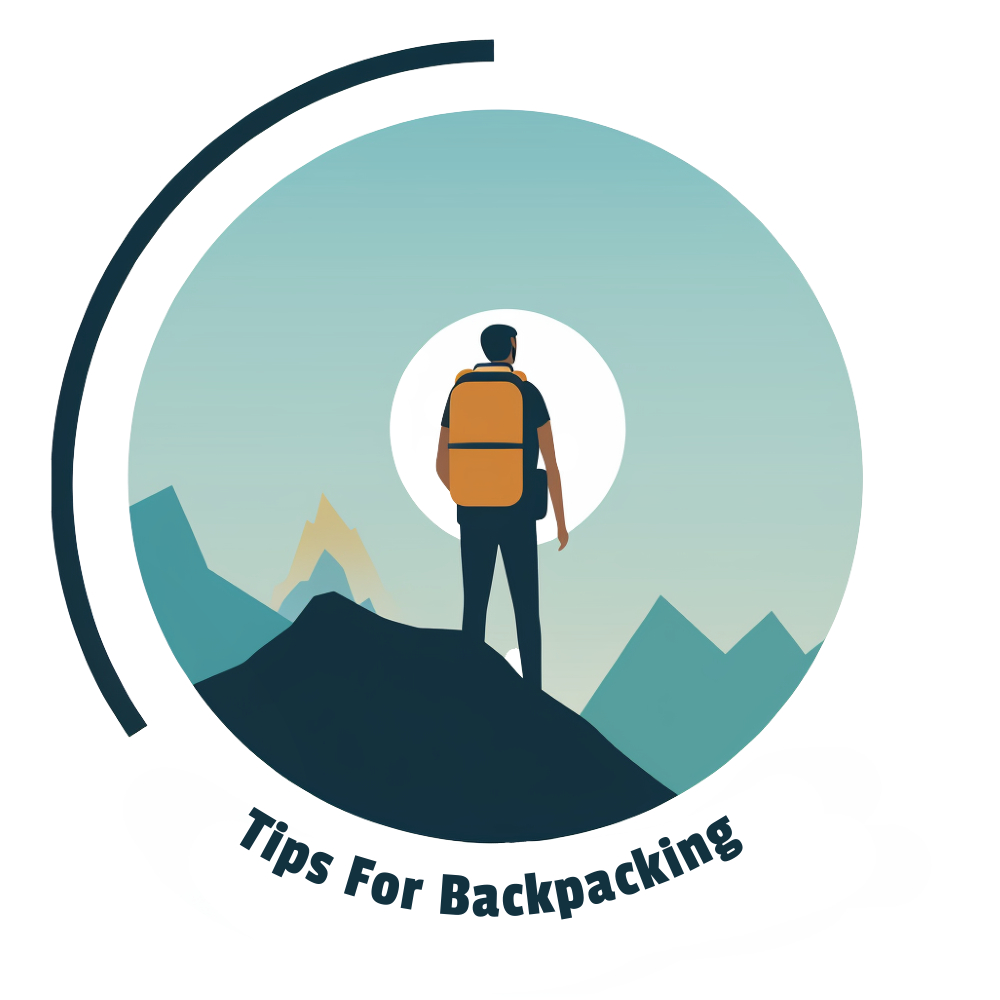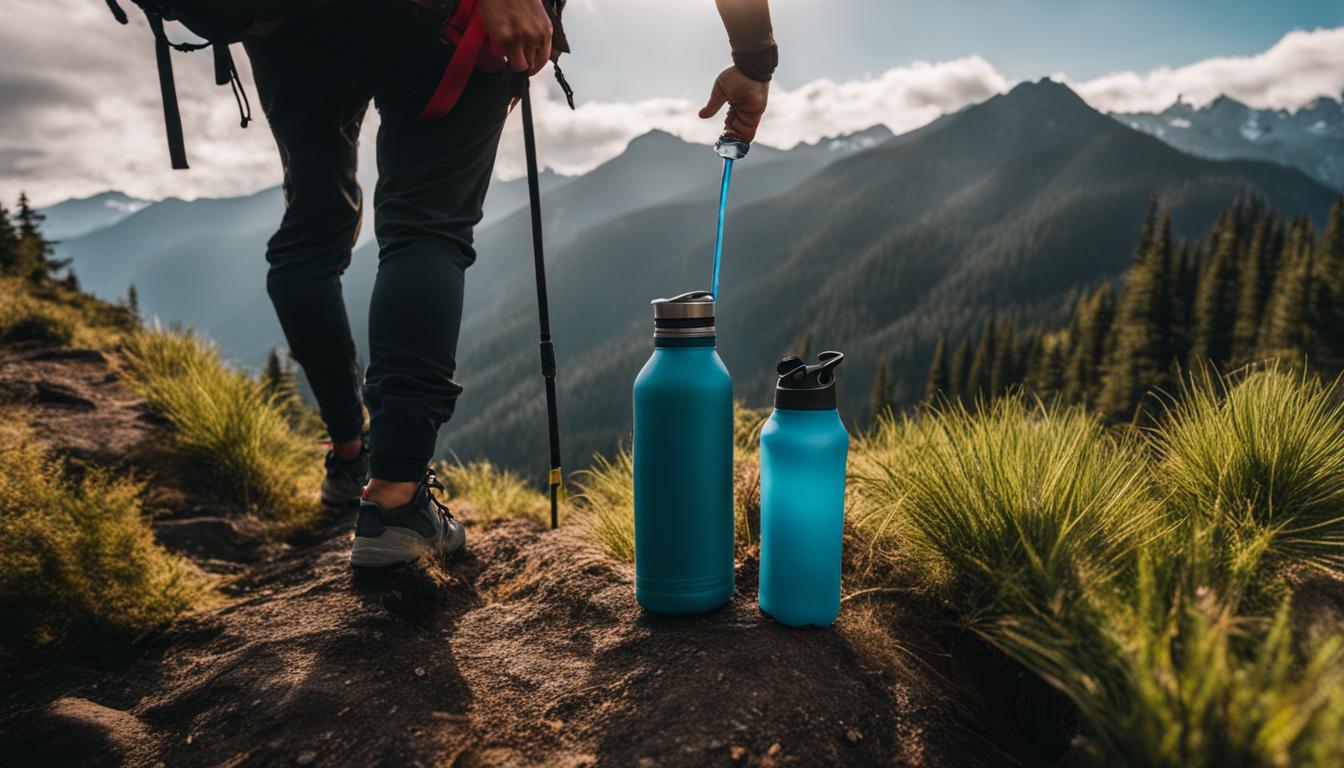When it comes to backpacking, I believe it’s important to be mindful of our environmental impact. By making conscious choices, we can minimize our carbon footprint and help preserve the beauty of the natural world we love to explore. In this article, I’ll share some eco-friendly backpacking tips that can make a difference in reducing our environmental impact.
Key Takeaways:
- Choose more efficient transportation methods like public transportation or carpooling to reduce the environmental impact of your backpacking trips.
- Opt for sustainable and eco-friendly gear made from recycled or organic materials for a greener backpacking experience.
- Practice low-impact hiking techniques such as sticking to designated trails, packing out all your trash, and respecting wildlife and habitats.
- Select a vegetarian or vegan diet while backpacking to reduce your carbon footprint and promote sustainable food choices.
- Research and choose accommodations that prioritize sustainability and support local communities to further minimize your environmental impact.
Eco-Friendly Gear for Backpacking

When it comes to backpacking, choosing eco-friendly gear is essential for minimizing your environmental impact. By opting for sustainable travel practices and green camping strategies, you can ensure that your adventures leave a minimal footprint on the planet.
One of the key factors to consider when selecting gear is the materials used. Look for gear made from sustainable materials such as recycled or organic fabrics. These options not only reduce waste but also limit the extraction of new resources. Additionally, consider the durability and longevity of the gear. Investing in high-quality items that will last longer will ultimately minimize waste over time.
Another aspect to keep in mind is the weight of your gear. Lightweight options not only make your backpacking experience more comfortable but also reduce energy consumption during transportation. Choose gear that serves multiple functions to minimize the number of items needed. This way, you can maximize efficiency while minimizing your environmental impact.
By choosing gear made from sustainable materials, prioritizing durability, and opting for lightweight, multifunctional options, you can ensure that your backpacking adventures are eco-friendly and sustainable.
| Pros | Cons |
|---|---|
| Reduces waste | May be more expensive upfront |
| Minimizes resource extraction | May require additional research to find eco-friendly options |
| Long-lasting and durable | May have limited availability in certain regions |
| Lightweight for efficient transportation | May have a learning curve to adapt to new gear |
| Multi-functional |
Sustainable Gear Brands
- Patagonia
- REI Co-op
- Tentree
- Osprey
- Big Agnes
When selecting gear for backpacking, be sure to consider the production process and any ethical considerations associated with the brand. Look for certifications such as fair trade and cruelty-free to ensure that your gear aligns with your values. By making conscious choices in your gear selection, you can enjoy the great outdoors while minimizing your impact on the environment.
Low-Impact Hiking Techniques
When it comes to enjoying the great outdoors, it’s important to minimize our environmental impact and practice eco-conscious outdoor adventures. By adopting low-impact hiking techniques, we can help preserve the natural beauty of our surroundings while still enjoying all that nature has to offer.
Hike on Designated Trails
One of the most crucial low-impact hiking techniques is to stick to designated trails. These trails are carefully planned to minimize damage to vegetation and wildlife habitats. By staying on the designated path, we can prevent soil erosion, protect fragile ecosystems, and ensure the sustainability of our natural spaces.
Practice Leave-No-Trace Principles
Another important aspect of low-impact hiking is to practice the principles of Leave-No-Trace. This means packing out all our trash and waste, leaving the trail and camping areas as we found them. By minimizing our impact, we can help preserve the beauty of the outdoors for future generations to enjoy.
Respect Wildlife and Aquatic Ecosystems
While hiking, it’s essential to be respectful of wildlife and aquatic ecosystems. Keep a safe distance from animals and avoid feeding them, as this can disrupt their natural behavior and lead to dependency on humans. When using natural water sources, such as rivers or lakes, be mindful of the delicate aquatic ecosystems and minimize your impact to ensure their long-term health.
By incorporating these low-impact hiking techniques into our outdoor adventures, we can enjoy nature while minimizing our environmental footprint. Let’s strive to be responsible stewards of the environment and promote sustainable practices for a greener future.
What Are Some Tips for Minimizing Environmental Impact While Backpacking?
When backpacking, consider using biodegradable hygiene products to minimize environmental impact. Choose a lightweight, reusable water bottle to reduce plastic waste. Follow leave-no-trace principles by packing out all trash. Opt for sustainable, eco-friendly gear made from recycled materials. These environmentally friendly backpacking tips can help protect the environment.
Conclusion
After exploring various ways to minimize your environmental impact while backpacking, it’s clear that sustainable travel practices are essential. By implementing these eco-friendly backpacking tips, you can reduce your carbon footprint and contribute to the preservation of our natural spaces.
One of the key areas to focus on is transportation. Opt for more efficient modes like public transportation or carpooling to significantly reduce your environmental impact. Lengthening your backpacking trips also helps lower your carbon footprint by reducing the number of individual journeys.
When it comes to gear, choosing eco-friendly options is crucial. Look for gear made from sustainable materials and consider its production process. Lightweight and multifunctional gear not only minimizes energy consumption but also decreases your waste footprint.
Additionally, practicing low-impact hiking techniques is vital. Stick to designated trails to preserve vegetation and wildlife habitats, and always follow leave-no-trace principles by packing out all your trash. Remember to respect wildlife and use natural water sources responsibly.
In conclusion, by making conscious choices in transportation, gear selection, hiking techniques, and food choices, you can have an incredible backpacking experience while reducing your environmental impact. Sustainable travel practices are the key to ensuring the beauty of our natural spaces for future generations.

